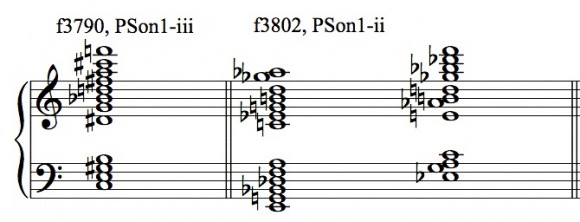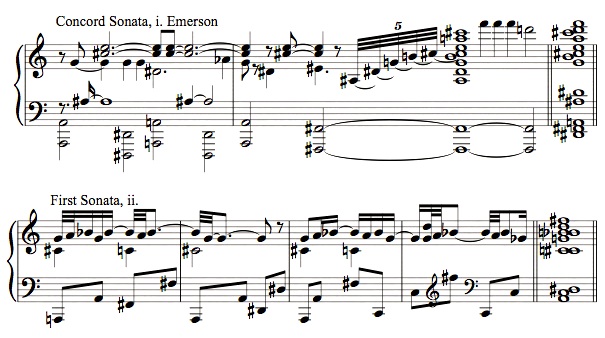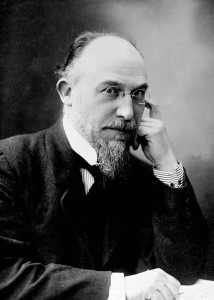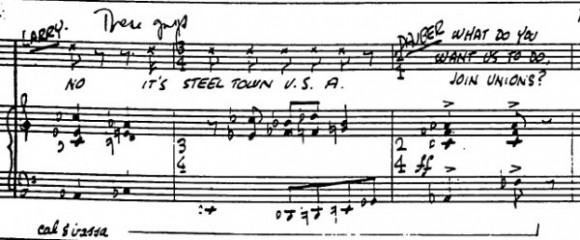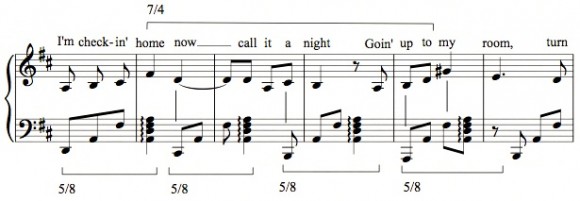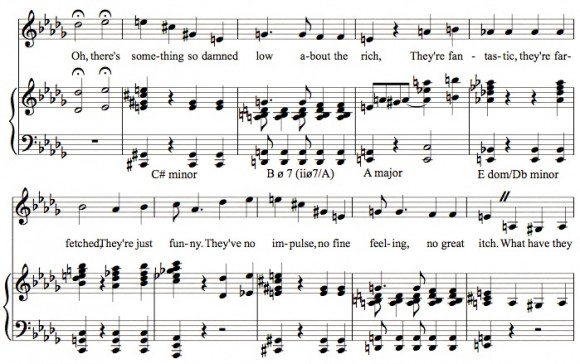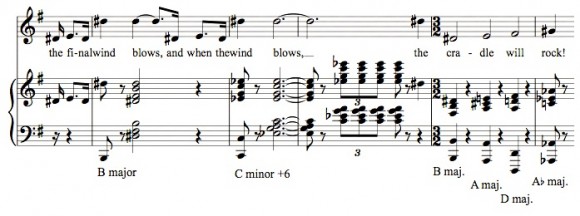NEW HAVEN – [UDPATE BELOW] I’m spending three days at Yale’s Sterling Library poring over Ives’s manuscripts, for hopefully the last time I’ll need to do so before the book is done. I think today one manuscript page, f3680, taught me more about how Ives composed than I’ve ever known before. I can’t do the page justice by trying to reproduce it here, but it will be in my book, believe me. It’s the beginning of a 1st Piano Sonata, with an inscription “Pine Mt., Aug 1901.” Pine Mountain was a hill in Connecticut within walking distance of Danbury where Ives and his friend Dave Twichell (later his brother-in-law) built a shack to hang out in. Whether he wrote the date on the page at the time or later and got it wrong, who knows and who cares. The page is the beginning of a mildly polytonal sonata movement in a gently rocking 6/8 meter. Had it been written in the 1940s, you would call it mainstream conservative. But if you look at it with Ives’s First Sonata freshly in your head, you notice that the first measure is similar to that of the First Sonata’s third movement, mm. 3-4 from the middle of the first movement, mm. 12-17 similar to the end of the first movement, other measures seeming quotations of the third or first movement, and so on. It’s like a collage of high-profile bits of those two movements, all their major ideas crammed onto one page. So what Ives did, apparently, is start writing a kind of stream-of-consciousness piece, and then go back and focus on the best ideas, and expand and expand and expand from within, sorting out some ideas to one movement and some to another. He used his first-pressing composition as a kind of generator of themes and motives, and then went back and singled out the best ones for extended development.
The First Sonata has more undeveloped sketches to analyze in this respect – I went through more than two hundred pages today – than the Concord does, though the sketches for Thoreau brought me to a similar conclusion. If anyone ever wants to trace Ives’s compositional process from first inspiration to completed score (which is a little outside the scope of my project), the First Sonata’s third movement is a great test case. Ives was able to trust his subconscious to uncritically write a piece of music that had little value or coherence on its own, and then go back and mine it for the best ideas it offered, refining and expanding it again and again. It takes a lot of creative fortitude and not being satisfied with what’s on the page, not even knowing what there is on the page that’s going to turn out to be valuable. Some pretty odd-looking, non-prepossessing musical ideas turn out to be major thematic ones as a result. It’s a creative leap of faith.
One the other hand, I find things in the mss. that merely taunt me. Ives’s sketches are dotted with large chords in whole notes, many of them comprising all twelve pitches arranged via various-sized thirds or fifths. He often places these chords immediately following a double-bar-line where he’s ended a movement. For instance, here are some chords I found at the end of sketches for the First Sonata’s third and second movements, respectively:
I’ve tried correlating the chords with sonorities from the preceding movement, and gotten nowhere. And had that worked, why would he write the chord after the movement is finished rather than at the beginning? I stare at these chords and send out vibes to the hereafter: “Charlie, you’re trying to send me some kind of message here, but I’m not getting it yet. Can you be a little clearer?”
I call him Charlie now, we’re pretty close.
UPDATE: I woke up this morning and the answer was swimming in front of my eyes. I had found it odd that so many of the chords had diminished seventh chords on the bottom, and then I remembered that Ives’s bass ostinatos often jump up and down by minor thirds. Take a look at these two passages:
All the major notes from each passage add up to the chords at the end. That the second example wavers between Bb and B and C# and C in the lower treble fits the paradigm, because some of Ives’s such charts show alternate accidentals for certain notes in the chord. Ives clearly liked to experiment with large vertical sonorities as a way of organizing moments of static texture, often making sure that he didn’t reuse the same pitch in different registers, and as a way of organizing his polytonality with different triads in different registers.

